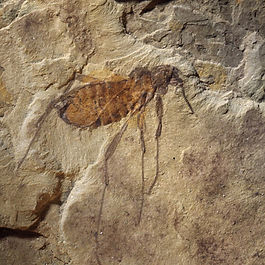

KOONWARRA FOSSIL BED DISPLAY SHELTER
The Leongatha Rotary Club is building a covered shelter at Koonwarra on the Great Southern Rail Trail for the benefit of rail trail users and visitors to Koonwarra. It will be located next to the existing toilet facilities & drinking fountain off the South Gippsland Highway. Currently the site has a drinking fountain, a few park bench type seats and access to public toilets. But there is no cover from the elements, we want to change that with a structure that provides shelter from rain and to a lesser degree, wind.
SHELTER DESIGN & KEY FEATURE
The shelter has been designed locally by Hulls Engineering and will be comprise an arched roof with a roll corrugated cladding roof supported on steel pillars with a concrete foundation. There will be a rammed earth wall at one end incorporating the display wall.
(Artist’s impression of the shelter design)
(Architectural drawings of the shelter design)
The key feature of the shelter will be a display wall showcasing information about the world class Koonwarra Fossil Beds that lie nearby. Leongatha Rotary Club has partnered with Melbourne Museum, and Zev Landes to develop an exciting and educational display that will become a feature of the small Koonwarra community.
(An initial design for the display wall)



LETS MEET TARWINIA, THE GIANT FLEA
Let’s meet the hero figure of the display. Tarwinia Australis an Australian mesozoic flea (see picture below) which was some 7mm in length. Tarwinia is a giant compared to modern fleas. Tarwinia will be our guide to the display.

HOW CAN YOU HELP
The Leongatha Rotary Club is working with all agencies responsible for the site at Koonwarra, including the South Gippsland Shire Council, VicRoads, Gippsland Water, and others to build the display shelter.
Leongatha Rotary Club has committed funds to get this project up and going and has sort and is seeking funding from government and philanthropic organisations. We are actively pursuing sponsorship of the project from businesses, both locally and across the wider region.
If your business wants to become involved as a sponsor, please contact the club by email to rotaryleongatha@gmail.com to find out how to be a part of this project.
SPONSOR/PURCHASE A NAME PAVER
Individuals and families can help too. A donation of $100 entitles you to have your or another name engraved into a paver as a lasting record of your valued support.
Your name paver along with others will be permanently installed as part of a path leading from the Rail Trail to the Koonwarra Fossil Bed Display Shelter and on to the toilet facilities. This will proudly show your support for the project. The pavers measure 230 x 115 x 50mm and have space for a maximum of 48 characters across 3 lines of text with 16 characters per line. Characters include; letters, numbers, punctuation marks or spaces.
(An example of a paver with a single line of text)
A paver could have a family name, or an individuals name on it. Maybe even a memorial paver to a family member or individual.
The family of one of our current members is purchasing a paver in memory of their father who was a former Leongatha Rotarian. As an example, this is the text they will be using.
First Line IN MEMORY OF (12 characters)
Second Line ROTARIAN (8 characters)
Third Line KEVIN HOGAN (11 characters)
Use the link below to go to our 'Named Paver Order Form’ to purchase/sponsor your paver. Pavers are $100 each and can be paid for via PayPal or a Credit Card.
This is a great opportunity to be part of the Koonwarra Fossil Bed Display Shelter.

WHERE IS KOONWARRA?
Koonwarra is located 142km South East of Melbourne on the South Gippsland Highway. Koonwarra is roughly halfway between the towns of Leongatha and Meeniyan.

MORE INFORMATION
If you would like more information about the project or would like to become involved, please contact the Leongatha Rotary Club by email to rotaryleongatha@gmail.com
HISTORICAL CONTEXT OF THE FOSSIL BED
The Koonwarra Fossil Site, dated to be 115 million years old, reveals a snapshot of a small, cool freshwater lake from Cretaceous Gondwana. At this time Australia was still connected to Antarctica meaning that the Koonwarra site was much closer to the south pole.
The site was discovered during the South Gippsland Highway straightening in 1961. Initial fossils were found in 1962 by Jim Bower and a University of Melbourne team, with assistance from the Country Roads Board.
Early research included description of fossil insects, crustaceans, fish, feathers, and plants including what was, at the time, the oldest known flowering plant in the world.

(A fossil flea from Koonwarra)

(A fossil fish from Koonwarra)

(A fossil feather from Koonwarra)
The most recent opening of the fossil beds was for a short period of exploration in 2013. Researchers today are still working on Koonwarra Fossils using advances in technology allowing better imaging and analysis of the fossils, revealing more about the ancient ecosystem and its inhabitants. The site remains a subject of interest for both Australian and international researchers, contributing to broader studies on Gondwana’s paleoenvironments.
The shelter and display located right next to the Great southern rail Trail will bring prehistoric Koonwarra to the attention to a wide range of visitors, be they trail riders, walkers, or runners. With facilities for travellers and a store nearby with great coffee the Koonwarra Fossil Bed Display will be a major South Gippsland destination and attraction.